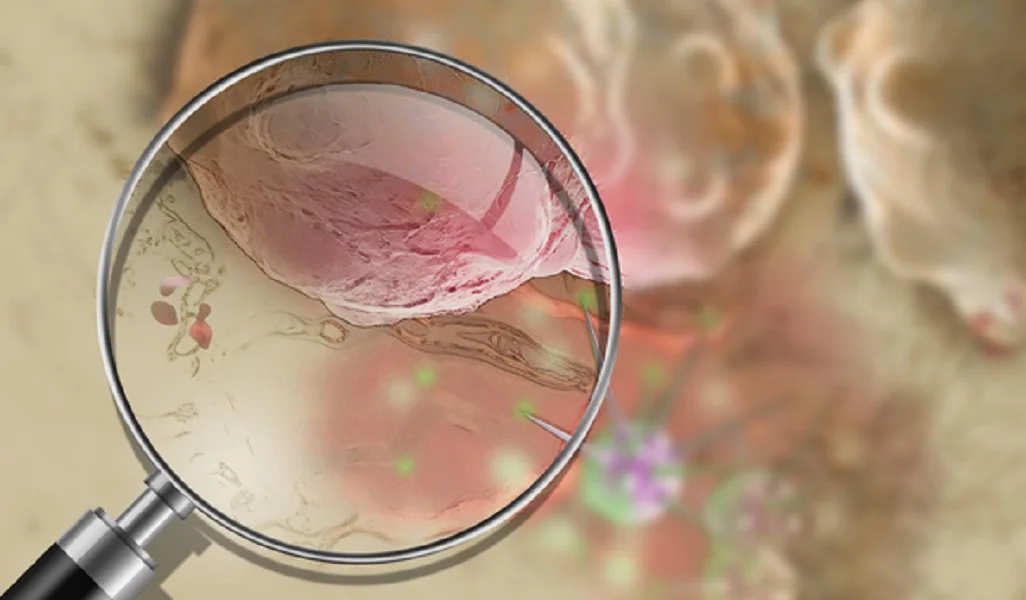News & Articles

A Closer Look: Diagnosis of Cancer, Prostate Cancer & Female Cancers

Getting a closer look at cancer
PCC doctors hold an open dialogue with the public on the diagnosis of cancer, prostate cancer and female cancers.
Almost 700 people registered for Parkway Cancer Centre’s (PCC) open dialogue with doctors. Held online, it saw them send numerous questions on a wide range of cancer-related issues. Taking the questions were three panelists: PCC Medical Director Dr Ang Peng Tiam and Senior Consultants Medical Oncology Dr Foo Kian Fong and Dr Wong Chiung Ing.
An overview of cancer: Dr Ang Peng Tiam
In his opening session, Dr Ang addressed general questions on cancer diagnosis and treatment.
How common is cancer? What is my risk of getting cancer?
Cancer is the leading cause of death in Singapore. Every day, 35 people are diagnosed with cancer, and the lifetime risk of being diagnosed with cancer is 1 in 4.
With better understanding of the disease – especially at the molecular level – and significant advances in diagnostic imaging and treatment, we have seen survival rates improving.
Using enhanced radiologic imaging methods like the PET scan, doctors are able to see whether the cancers have metastasised. This has allowed better patient selection, thereby excluding those who may not benefit from surgical intervention. There are also many new therapeutic agents such as cytotoxics, hormonal therapy, targeted agents, monoclonal antibodies and immunotherapy.
How has the diagnosis of cancer changed?
While diagnosing cancer used to be a matter of looking at cancerous cells under the microscope, doctors today are able to determine the molecular profile of the cancer cells so that the treatment can target the malignant cells more effectively. For example, cancers can be classified as:
- Colon cancer: Wild-type KRAS/NRAS, MSI, HER2, BRAF
- Lung cancer: EGFR, ALK, ROS-1, PDL-1
Compared to older forms of radiologic imaging, PET-CT scans can more accurately detect cancers which have spread to other parts of the body. In addition, the PET-CT scan has shown to be an effective tool in assessing the response of tumours to chemotherapy.
Why are some people diagnosed only when the cancer is at an advanced stage?
There are many possible reasons. Many cancers are not diagnosed at earlier stages because they have no early symptoms, or have symptoms that are non-specific. For instance, a cough may be mistaken as a “smoker’s cough” or a common viral infection instead of lung cancer. Blood in the stools may be due to piles (haemorrhoids) or colorectal cancer.
Some patients also ignore or deny their symptoms and do not want to see a doctor, for fear of being diagnosed with cancer. Others believe that cancer cannot be treated, or they choose alternative medicine. By the time they do see a doctor, the cancer may have progressed to a late stage.
We advise patients to seek proper medical care when they develop any symptom that persists for more than two weeks or when symptoms recur after getting better initially.
Why is it that sometimes a cancer cannot be seen on a CT scan, but is picked up by cancer marker tests?
A CT scan looks for tumours, which are formed when cancer cells aggregate together. But if it is a disseminated microscopic disease, a CT scan won’t be able to pick it up; the cancer marker in the blood test, however, may be elevated.
Why is it important to classify cancers in such detail?
Knowing the molecular profile allows doctors to treat cancers more effectively with the most appropriate medicines. For example, for breast cancer:
- ER and PR positive breast cancer can be treated with hormonal therapy.
- HER2 positive breast cancer can be treated with anti-HER2 antibodies.
- Triple negative breast cancer can be treated with chemotherapy and/or immunotherapy.
Lung cancers can also be classified as small cell lung cancer or non-small cell lung cancer, which can be further classified as adenocarcinoma, squamous cell carcinoma or large cell carcinoma. Knowing the mutational status enables very specific treatment, which can see as high as 80 per cent confidence in response.
Can non-smokers get lung cancer?
Yes. Non-smokers can develop lung cancer. The likelihood of EGFR mutation in non-smokers with lung cancer is higher compared to smokers. Patients with EGFR-positive disease have a better prognosis compared to those without EGFR mutation.
Prostate cancer: Dr Foo Kian Fong
In his session, Dr Foo Kian Fong shed light on the causes, diagnosis and treatment of prostate cancer, as well as genetic factors.
What causes cancer?
In a normal human body, cell growth is balanced by cell death. Cancer results when cells multiply uncontrollably, forming tumours.
What are the risk factors of cancer?
Generally, endogenous (internal) and exogenous (external) factors will interact to damage DNA, cell repair mechanisms and cell growth regulatory mechanisms, which in turn lead to cancer.
- Endogenous factors: Age, gender, genetic make-up, existing medical conditions, inherited conditions and mutations
- Exogenous factors: Diet, alcohol intake, smoking, viruses, exposure to pollutants and radiation, hormonal replacement therapy
If a family member has cancer, am I at a higher risk?
Possibly. A small percentage of patients get cancer because of inherited genetic defects, such as Familial Adenomatous Polyposis (FAP), Lynch syndrome, and BRCA (breast and ovarian cancers).
There are other genetic syndromes that can predispose to cancer. Having a gene like BRCA does not mean you will definitely (100 per cent) get breast cancer, the risk is about 70 per cent.
People with inherited cancers tend to get cancer at a younger age and get more than one type of cancer.
However, there are new targeted drugs available for advanced BRCA-related cancers and immunotherapy for advanced cancers related to Lynch syndrome. While these genetically related cancers are rare, we do occasionally see patients with a family history of cancers that does not fit to any of the known inherited cancers.
For those with a family history of cancer, the risk of having cancer is slightly higher than the normal population. For example, if you have a family history of colon cancer, you have a 1.7 times higher risk of getting the same cancer.
How common is prostate cancer?
Prostate cancer is the third most common cancer among men in Singapore. Called adenocarcinoma, it is caused by the uncontrolled growth of cells in the prostate gland.
What are my risks of getting prostate cancer?
The risk factors include age, race, genetic factors, smoking, diet and obesity. A diet that is high in fat and low in vegetables, for instance, increases the risk. In general, diet can contribute to 25 per cent of the cancer risk – what you eat and cooking methods. More fruits and vegetables will definitely lower the risk.
For older people, the incidence of prostate cancer goes up from 30 per cent for ages 70 to 80, to 67 per cent for ages 80 to 89. Some 30 to 50 per cent of patients have cancer that has already spread to other organs when they first seek treatment.
What are the symptoms of prostate cancer?
There are typically no symptoms for early prostate cancer.
Symptoms start to show only when the cancer gets more advanced. They include:
- Urinary symptoms
- Tiredness
- Anaemia
- Loss of appetite and/or weight
- Bone pain
What are the chances of cure for prostate cancer?
If prostate cancer is detected early, it is potentially curable by surgery or radiation. The 15-year survival rate can be as high as 65 per cent if treated, but drops to 35 per cent if not treated.
How is prostate cancer detected?
A digital rectal examination (DRE) is done to check for swollen nodules, or a Prostate Specific Antigen (PSA) test can be done via a simple blood test.
A high PSA, however, can also be due to other causes such as infection, high blood pressure and kidney stones. A PSA check is recommended for men above the age of 40, those with lower urinary tract symptoms, abnormal DRE, or family history of prostate cancer.
Prostate cancer can be confirmed with transrectal biopsy and can be staged using an MRI, bone scan or PSMA-PET scan.
How is prostate cancer treated?
This cancer is usually treated with surgery and/or radiotherapy with or without hormonal therapy. For advanced stages, the approach tends to be palliative, with treatment given to delay the onset of symptoms. This may include hormonal therapy, chemotherapy, targeted therapy and immunotherapy. The average life expectancy is two to five years.
The key to better cure rates is early detection. Don’t deny the symptoms as part of ageing, and seek proper treatment. Early prostate cancer is potentially curable, and even in its advanced stage, is still controllable.
What is the cure rate for Stage 3 colon cancer? What are the chances of a relapse?
It depends on factors like what is the depth to which the cancer has spread, and how many lymph nodes it has spread to. The more lymph nodes are affected, the lower the chances of cure and the higher the chances of recurrence.
Female cancers: Dr Wong Chiung Ing
Dr Wong, who specialises in female cancers, took participants through gynaecological and breast cancers.
How common is breast cancer?
It is the most common cancer among women in Singapore, accounting for 30 per cent of all women cancers. Gynaecological cancers (uterus, ovary and cervix) make up another 15 to 20 per cent.
What are the symptoms of breast cancer?
Signs and symptoms include:
- Breast lumps
- Nipple inversion
- Nipple discharge
- Skin ulceration
- Skin changes on the breast and nipple
- Breast pain
- A rash that doesn’t go away
What are the symptoms of cervical cancer?
Signs and symptoms include:
- Abnormal vaginal bleeding: Between periods, after sex, after menopause
- Bloody, heavy or smelly vaginal discharge
- Pain or discomfort in pelvic area
- Changes in bladder or bowel habits
- Abdominal pain, swelling, feeling bloated
- Nausea, loss of appetite/weight, feeling full quickly, fatigue
What are my chances of being cured?
It depends on the diagnosis – the earlier the diagnosis, the better your chances of recovery:
- Stage 1: Tumour confined to organ, small size – 90 per cent
- Stage 2: Tumour bigger but still confined to organ, may have invaded surrounding lymph nodes – 70 to 80 per cent
- Stage 3: Tumour invades surrounding structures and lymph nodes – 30 to 60 per cent
- Stage 4: Tumour locally invasive, spread to distant organs – 3 to 7 per cent
What are the risk factors of breast and gynaecological cancers?
The risks include non-modifiable and modifiable factors:
- Age: The risk of breast cancer increases from 1 in 250 for a 30-year-old to 1 in 20 for a 70-year-old.
- Family history: The closer a family member is and the younger the age when he or she gets the cancer, the higher the risk. BRCA mutations are inherited and can increase the risk of many cancers including breast, ovarian, prostate and pancreatic cancer.
- Hormones: Female hormones, oestrogen and progesterone, stimulate more than half of breast cancers. The body is exposed to oestrogen for a longer period of time in these conditions: Early menstruation before age 12, late menopause after age 55, women who have never given birth, late age of first pregnancy, or women who have never breastfed.
- Diet: A high-fat diet, alcohol, lack of exercise and obesity can increase the risk of cancer.
- Sexual activity: The main cause of cervical cancer is Human Papillomavirus (HPV) infection which is transmitted sexually.
What percentage of breast cancer is triple negative? What is the prognosis?
Some 10 to 20 per cent of all breast cancer cases are triple negative. Triple negative breast cancers tend to be more aggressive. They are usually treated with chemotherapy. Immunotherapy has shown promising activity in these cancers.
How are breast and gynaecological cancers treated?
Patients today have a wider range of treatment options and much better chances of survival. These include:
- Radiotherapy: Radiation therapy is the use of high energy X-rays or radiation to kill cancer cells. It is often used in combination with chemotherapy to treat cervical cancer.
- Chemotherapy: Chemotherapy are medicines which are either injected or taken orally to treat cancers. They enter the bloodstream and work by interfering with the ability of cancer cells to grow and divide.
- Hormonal therapy: This is the use of drugs to stop the hormonal stimulation which causes the cancer cells to grow.
- Targeted therapy: Targeted therapy uses drugs to “switch off” the target that controls cancer cell growth. As it targets mainly cancer cells, the side effects to normal cells are much less.
- Immunotherapy: Immunotherapy are medications that harness the body’s own immune system and allow it to recognise and destroy cancer cells.
How can I prevent a relapse of breast cancer?
Breast cancer is a very curable disease. If detected early, the five-year survival rate exceeds 90 per cent.
More importantly, have a healthy lifestyle. Eat healthily, exercise, do not be overweight, and avoid excessive alcohol.
It is also important to go for regular screening, and seek evaluation and treatment early if there are symptoms.
Written by Kok Bee Eng
| POSTED IN | Cancer Treatments |
| TAGS | cancer diagnosis, cancer relapse, cancer survivorship, colonoscopy, common cancer, history of cancer, immunotherapy, lung infection, prostatectomy, radiotherapy (radiation therapy), reduce cancer risk, stage 4 cancer, targeted therapy, tumour markers, tumours, women (gynaecological) cancer |
| READ MORE ABOUT | Cervical Cancer, Lung Cancer, Ovarian Cancer, Pancreatic Cancer, Prostate Cancer |
| PUBLISHED | 16 September 2020 |
